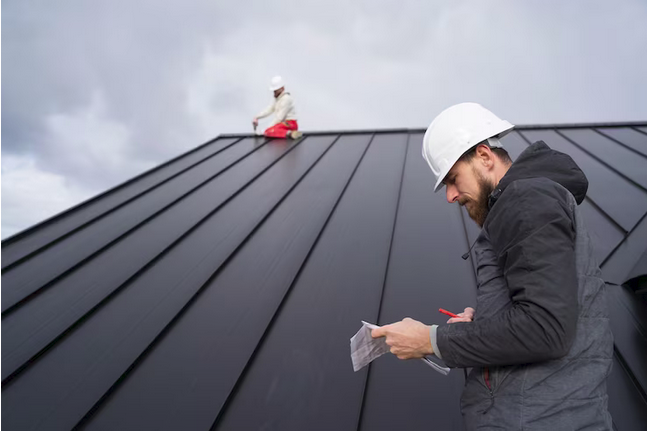Introduction:
Roof inspection is a crucial process that involves examining the condition and integrity of a building's roof. It is essential for homeowners, property managers, and insurance companies to conduct regular roof inspections to ensure the safety and longevity of the structure. This article will discuss the importance of roof inspections, the process involved, signs of roof damage, and frequently asked questions related to roof inspections.

Importance of Roof Inspections:
Preventive Maintenance: Regular roof inspections help identify minor issues before they escalate into significant problems. Timely repairs can prevent leaks, structural damage, and costly repairs.
Safety: A well-maintained roof ensures the safety of the occupants by minimizing the risk of collapses or accidents caused by structural deficiencies.
Insurance Requirements: Many insurance companies require roof inspections to assess the condition of the roof before providing coverage. Compliance with these requirements can help avoid coverage disputes and ensure smooth claim settlements.
Increase Property Value: A well-maintained roof enhances the overall value of the property, making it more appealing to potential buyers or tenants.
The Roof Inspection Process:
Exterior Examination: A roof inspector starts by examining the roof from the outside, checking for visible signs of damage such as missing or damaged shingles, cracks, or sagging.
Interior Inspection: The inspector also evaluates the roof from the inside, looking for signs of leaks, water damage, mold, or any other structural issues.
Attic Inspection: The attic is examined for proper insulation, ventilation, and signs of water intrusion or pest infestation.
Assessment of Flashings: Flashings, which are metal components that seal roof joints, are inspected to ensure they are intact and functioning correctly.
Evaluation of Gutters and Drainage: The inspector checks the gutters, downspouts, and drainage systems to ensure they are clear of debris and functioning properly.
Documentation: The inspector provides a detailed report outlining the findings, including photographs and recommendations for repairs or maintenance.
Signs of Roof Damage:
Leaks or Water Stains: Water stains on ceilings or walls indicate a potential roof leak that requires immediate attention.
Missing or Damaged Shingles: Cracked, curled, or missing shingles can compromise the roof's integrity and lead to leaks.
Sagging or Bowing: A sagging roof may indicate structural damage or excessive weight on the roof.
Granule Loss: Excessive granule loss from asphalt shingles can indicate aging or damage.
Mold or Algae Growth: The presence of mold or algae on the roof suggests poor ventilation or excess moisture, which can damage the roof.
High Energy Bills: A poorly insulated or damaged roof can lead to energy loss and increased heating or cooling costs.
Conclusion:
Regular roof inspections are vital for maintaining the safety, integrity, and value of a property. By identifying and addressing issues early on, homeowners and property managers can prevent extensive damage, minimize repair costs, and ensure the longevity of their roofs. Investing in professional roof inspections is a proactive approach that offers peace of mind and protects the property.

No comments yet